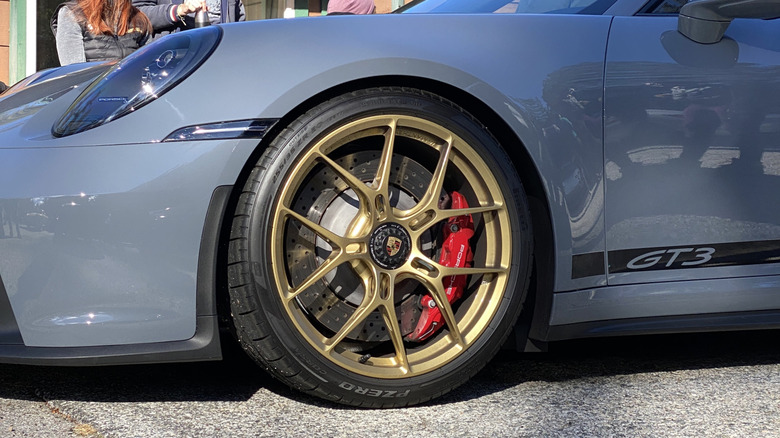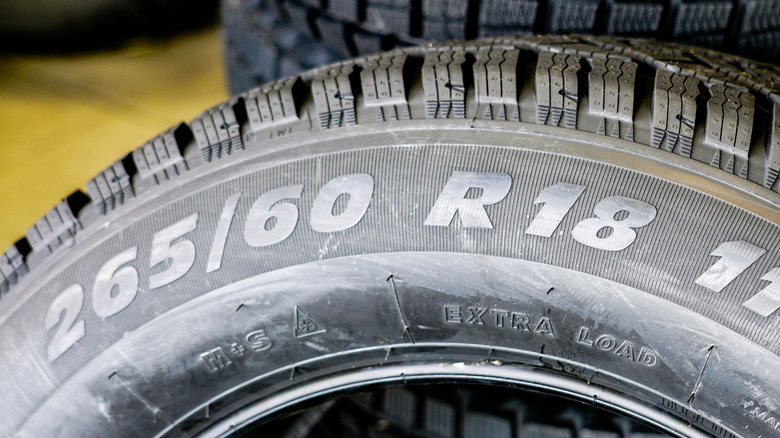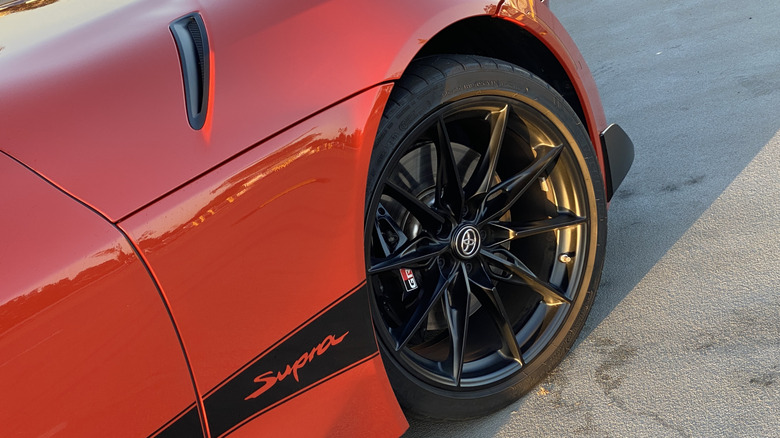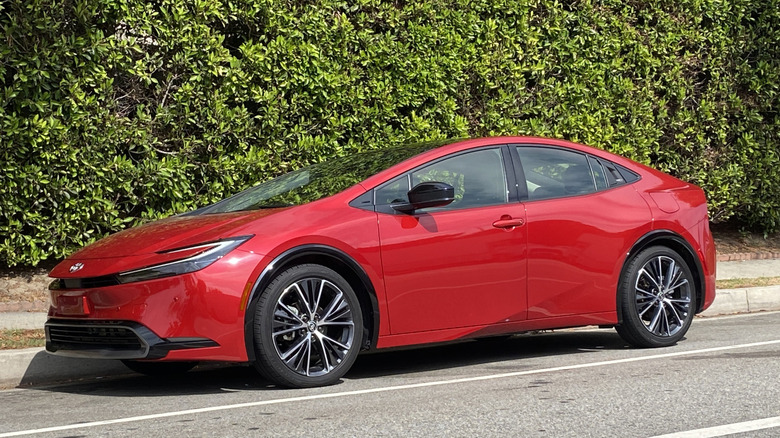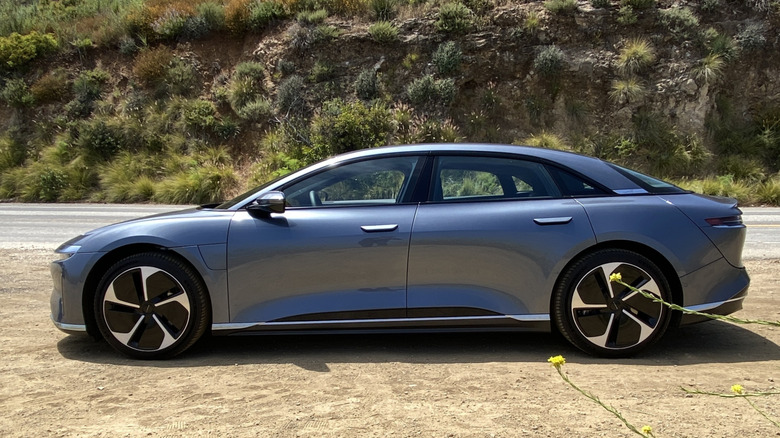Wide Vs. Narrow Tires: Does It Matter Which One You Choose?
Making sure you have the right kind of tire for your car is important. Tires need to be rated for the proper terrain, have enough tread, and be within the proper age range for safe operation. On top of safety concerns, different sizes and types of tires can change the handling dynamics, fuel efficiency, ride quality, and even the levels of interior noise in your vehicle. What's more, the average cost of a set of four tires is currently around $600 for small vehicles (with big tires meant for pickup trucks and high-performance tires designed for sports cars priced even higher), so you'll want to make the right choice before shelling out your hard-earned cash for a new set of rubber.
There are a number of concerns when it comes to selecting new tires for your car or truck, but one of the most important considerations is the size of the tire — it needs to fit your vehicle's wheels for it to be any good. But what's the right size tire for your vehicle? And does changing your tires width make a difference?
Establishing some information about tire sizes
Before we dive into the details about wide and narrow tires, let's cover the basics about tire dimensions. A tire's size is typically listed on its sidewall. Here's an example: P205/55R16. The letter P stands for passenger car, then the number 205 is the measurement of the width of the tire in millimeters. Next, the 55 stands for the height of the sidewall, expressed as a percentage of the width, also known as aspect ratio. So, 55 percent of 205 is the tire's sidewall height at 112.75 mm. Then R, which stands for radial (the kind of tire construction), and 16, which is the diameter of the car's wheel.
Tire sizes are most commonly expressed in millimeters. Some larger tires (think trucks and off-road vehicles) are measured in inches, like the Ford F-150 Raptor R, which uses 37x12.5R17LT tires. That measurement indicates a tire that's 37 inches in diameter, by 12.5-inches wide, on a 17-inch wheel (the R still stands for radial while the LT stands for light truck instead of passenger car). Make sense? Great. Now, with those measurements in mind, let's talk about the effects of wider and narrower tires.
How does a wider tire perform?
The wider a tire is, the larger its contact patch will be, which has an effect on all sorts of driving dynamics. A contact patch, as the name suggests, is the part of your tire that makes contact with the road. All other factors being equal, a tire with a wider contact patch can decrease stopping distances (make your car stop shorter), which is a benefit for safety and high-performance driving scenarios. Want to stop a few feet shorter when you spot an obstacle in the road? Wider tires will probably help you do that. Looking to decrease braking distances while you're out on the racetrack? Wider tires might do the trick.
Wider tires with larger contact patches can also improve handling capability, giving a car more grip when taking corners at high speed. The benefits of a bigger contact patch, however, can also have some potential drawbacks. Wider tires are likely to increase steering effort, and they will most certainly increase rolling resistance, potentially decreasing fuel economy, decreasing a car's acceleration, and increasing road noise. You'll have to factor in those changes before going with a wider tire setup, no matter what kind of car or truck you drive.
How does a narrower tire perform?
Narrow tires, for the most part, have the inverse effects that wide tires have. With smaller contact patches and lower rolling resistance, a narrower tire is more likely to return better fuel economy. This often comes into play on vehicles with economy as part of their stated mission — if you're driving a compact hybrid for maximum fuel economy, you'll likely want to go with the 205-series tires instead of the 215s, prioritizing efficiency over performance. Steering feels a bit quicker, and with a smaller contact patch, your car may feel a bit nimbler in tight spots. There are, just like with wide tires, some drawbacks with narrow tires.
Again, with all other factors being equal, narrow tires are likely to increase a vehicle's stopping distance. They also decrease handling capabilities, especially in high-performance scenarios, so sports cars likely won't be best served by narrow tires. Narrow tires are also likely to have a lower load range. Load range indicates the maximum amount of air pressure a tire can hold and how much weight it can carry. Some heavy-duty vehicles like trucks and vans often require high load-range tires that can handle some serious weight, so a narrow tire would be a big drawback here, limiting the weight your work truck could haul.
Which tire is right for your car?
The manufacturer of your vehicle typically notes the size tire that fits your vehicle on a sticker that's located on the driver's door jamb. That sticker is generally what we'd recommend unless you're making serious changes to your vehicle. Can you go narrower or wider than that specification allows? Sure, but there are pros and cons for both of those choices.
If a tire is much narrower or wider than the stock tire, it's not as likely to fit on your stock wheel. Going much larger or smaller than the stock tires can require additional modifications, such as new wheels or updated suspension. Referring back to our earlier example of the P205/55R16 tire, something with a small difference like a P215/45R16 might fit, but pump it up to a 255 or 265 width and you're likely to need a wider wheel as a result.
Plus, while wider tires may fit the wheel you're using, they can often rub on the fender wall of a vehicle, causing damage to the tire and the vehicle — especially in hard-cornering scenarios. Checking online forums, tire reviews, and speaking to your local tire installer will help you make sure that a tire fits on your wheels, as well as inside the wheel well.
